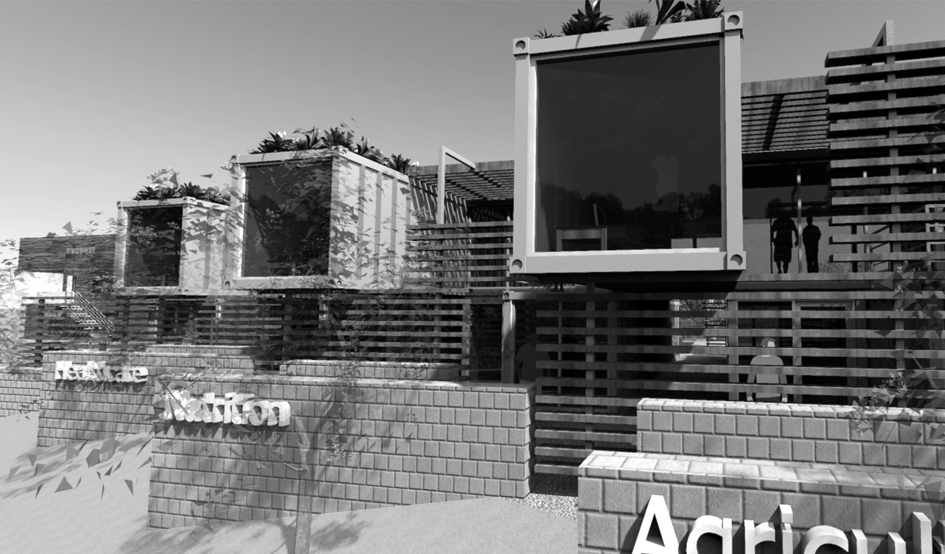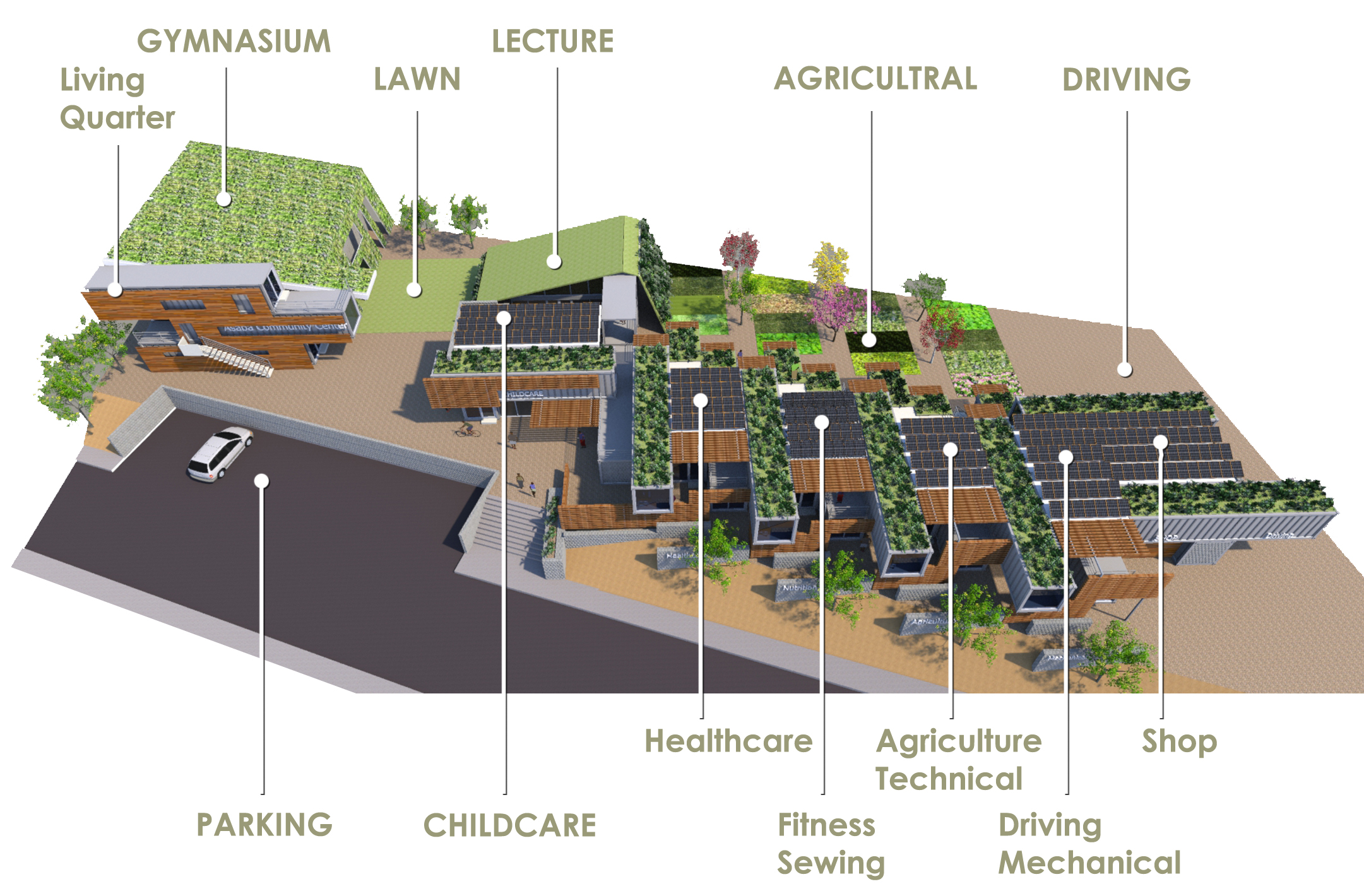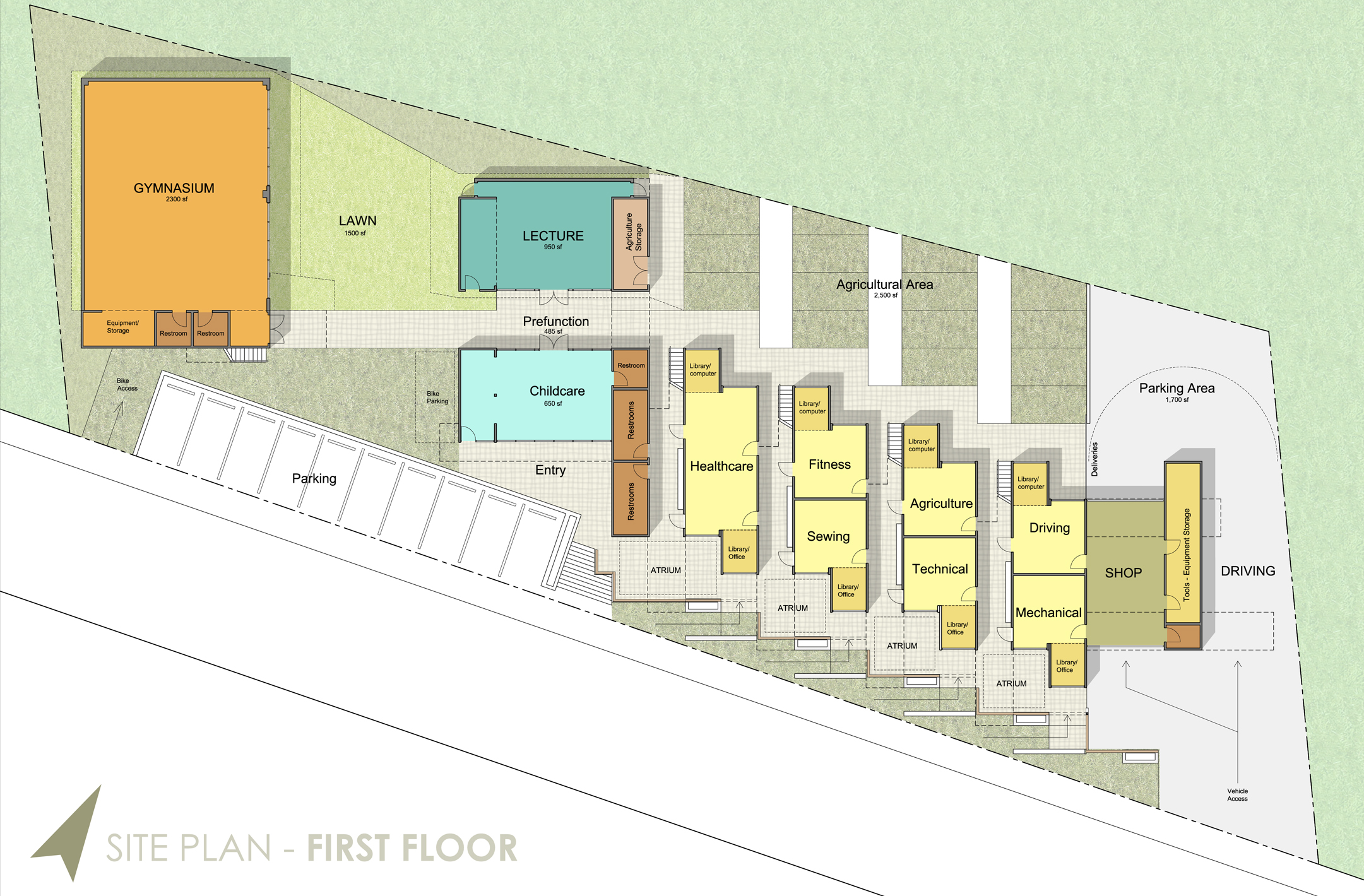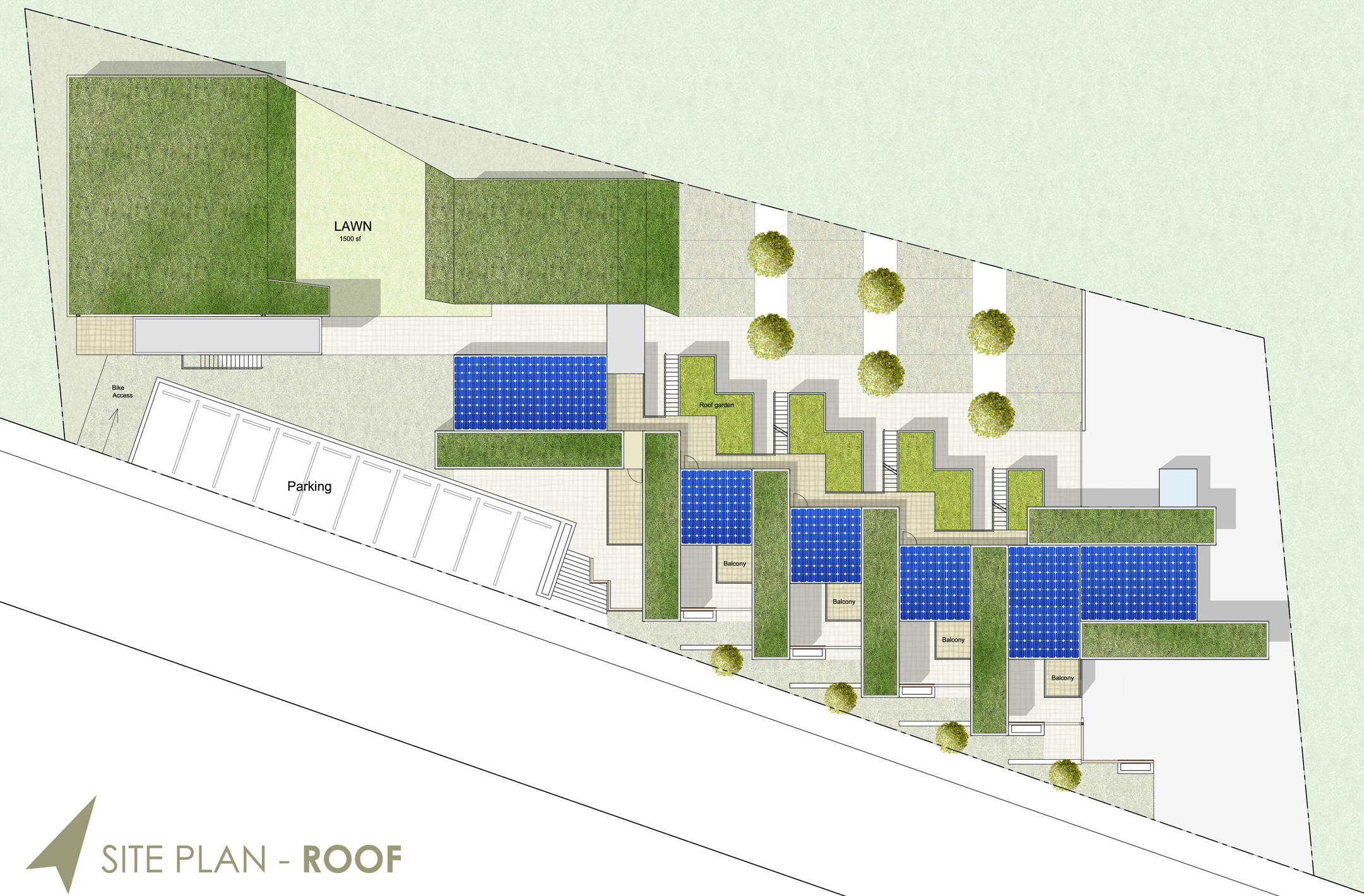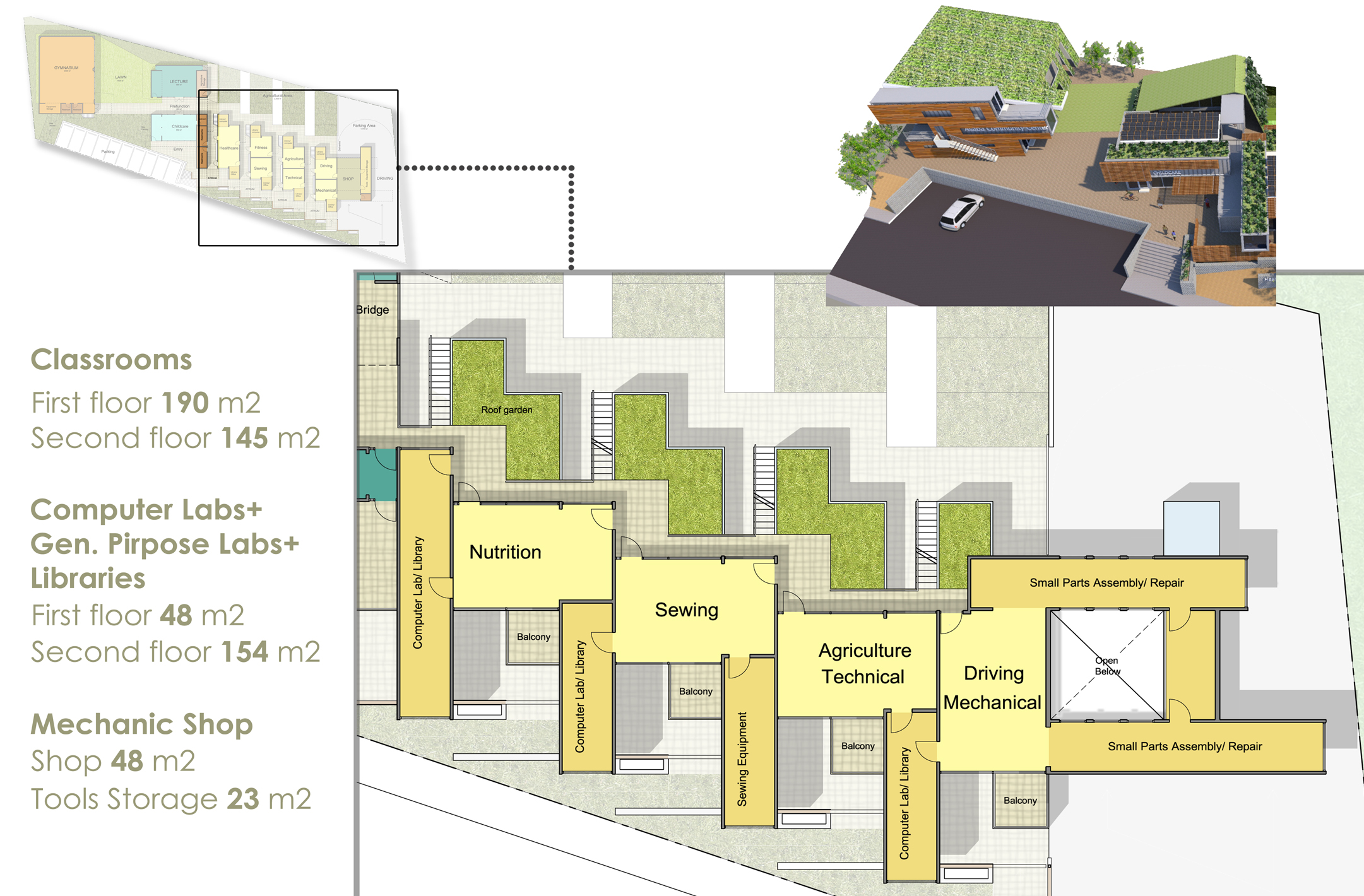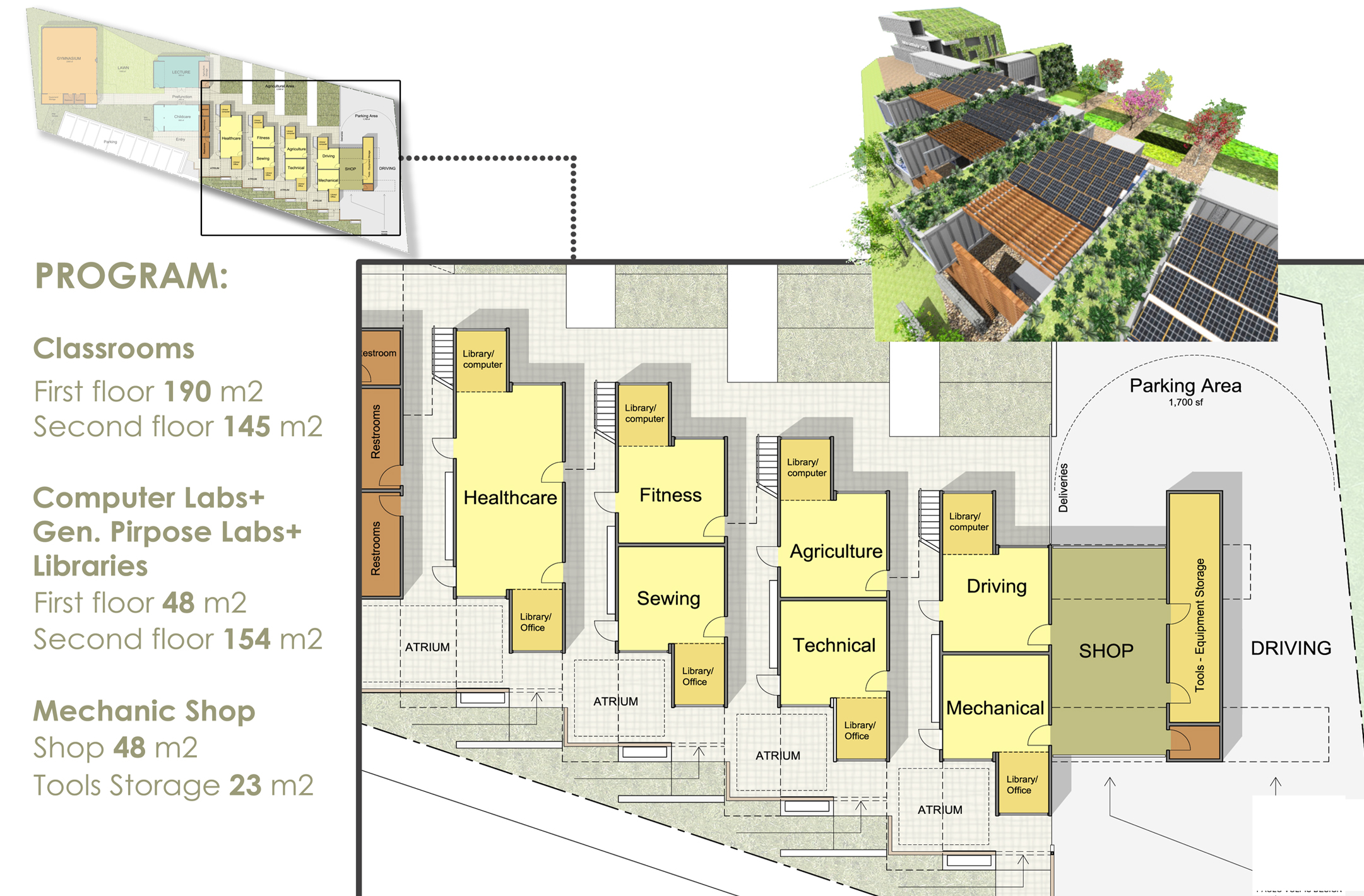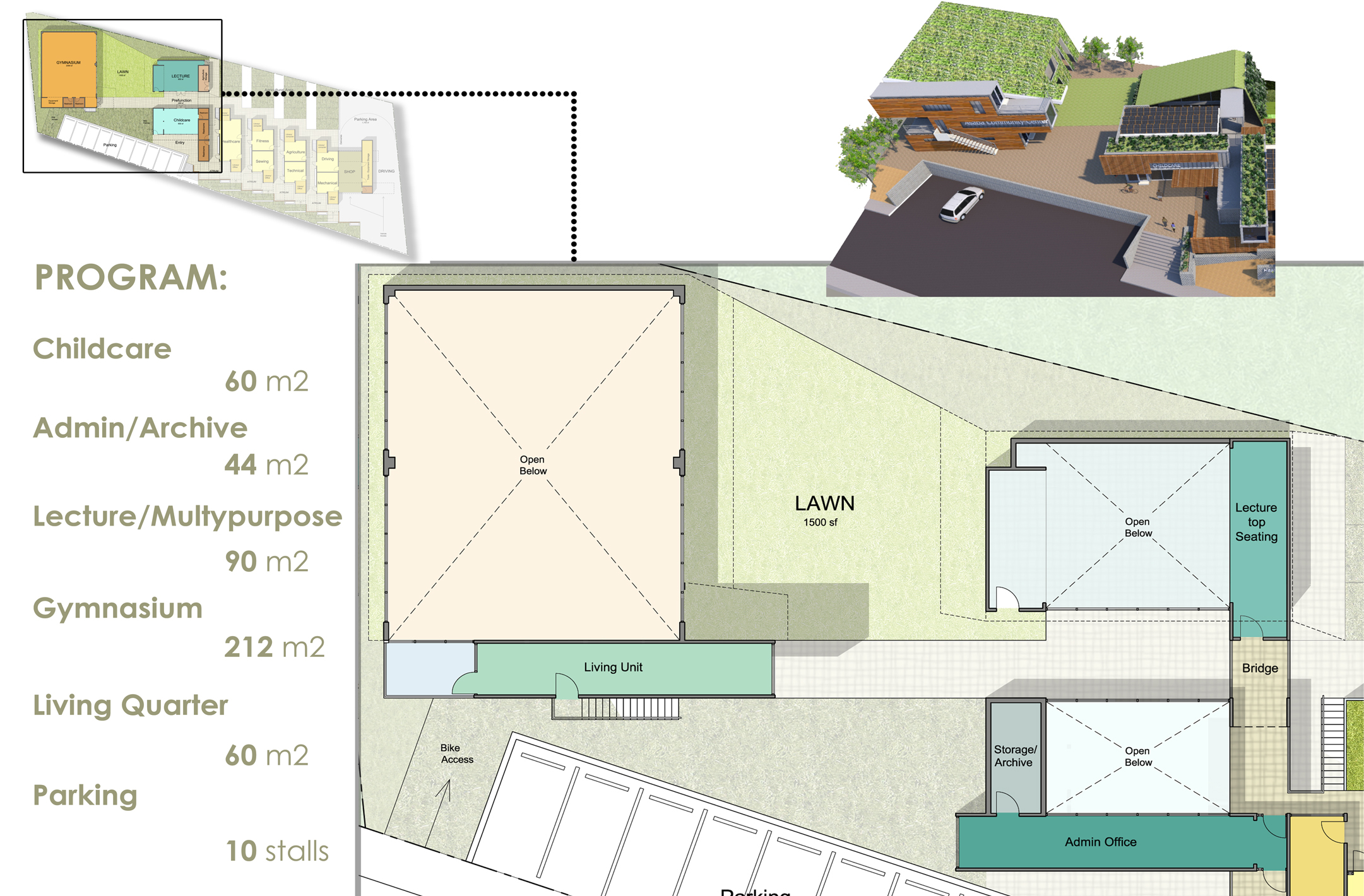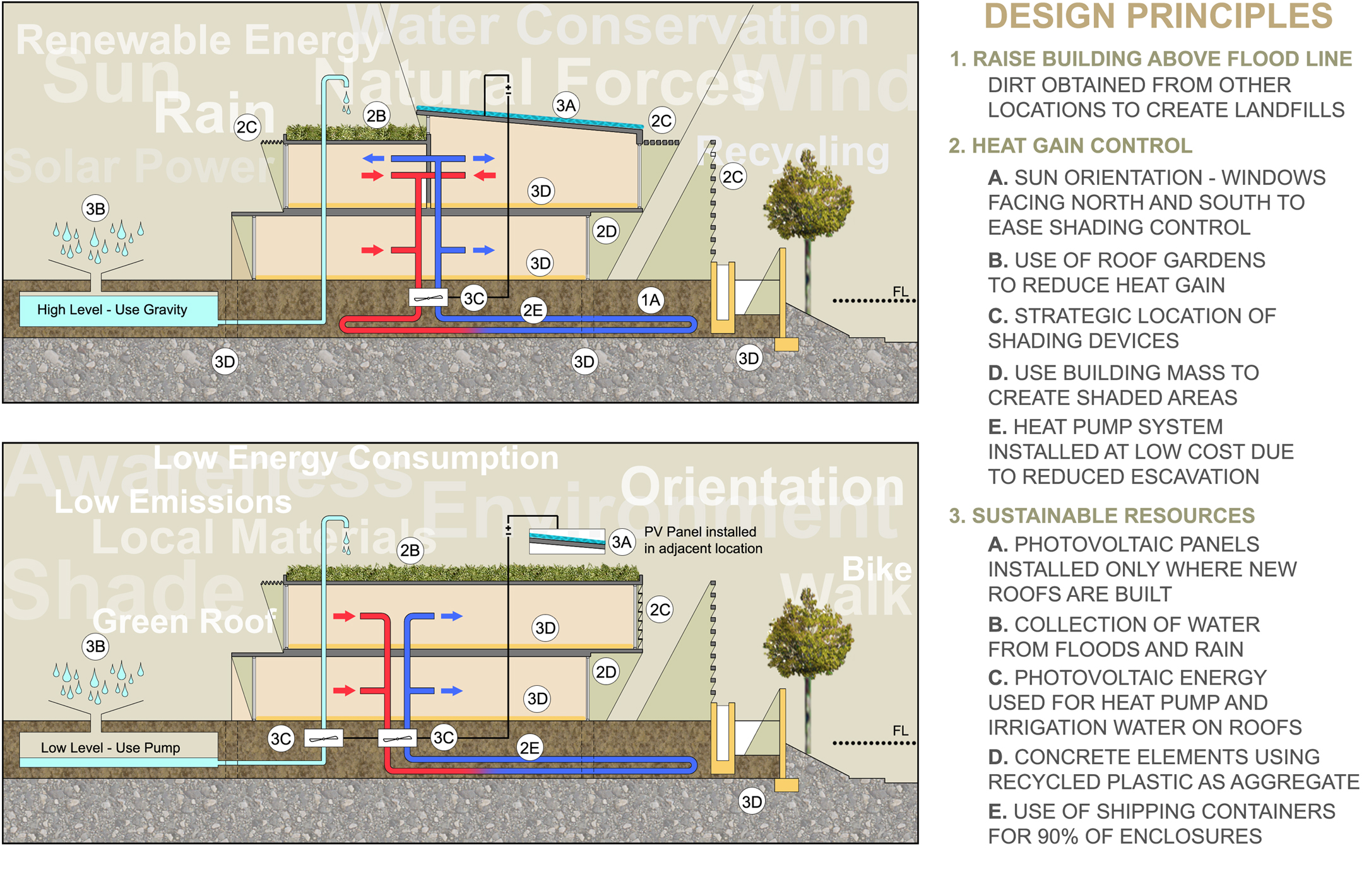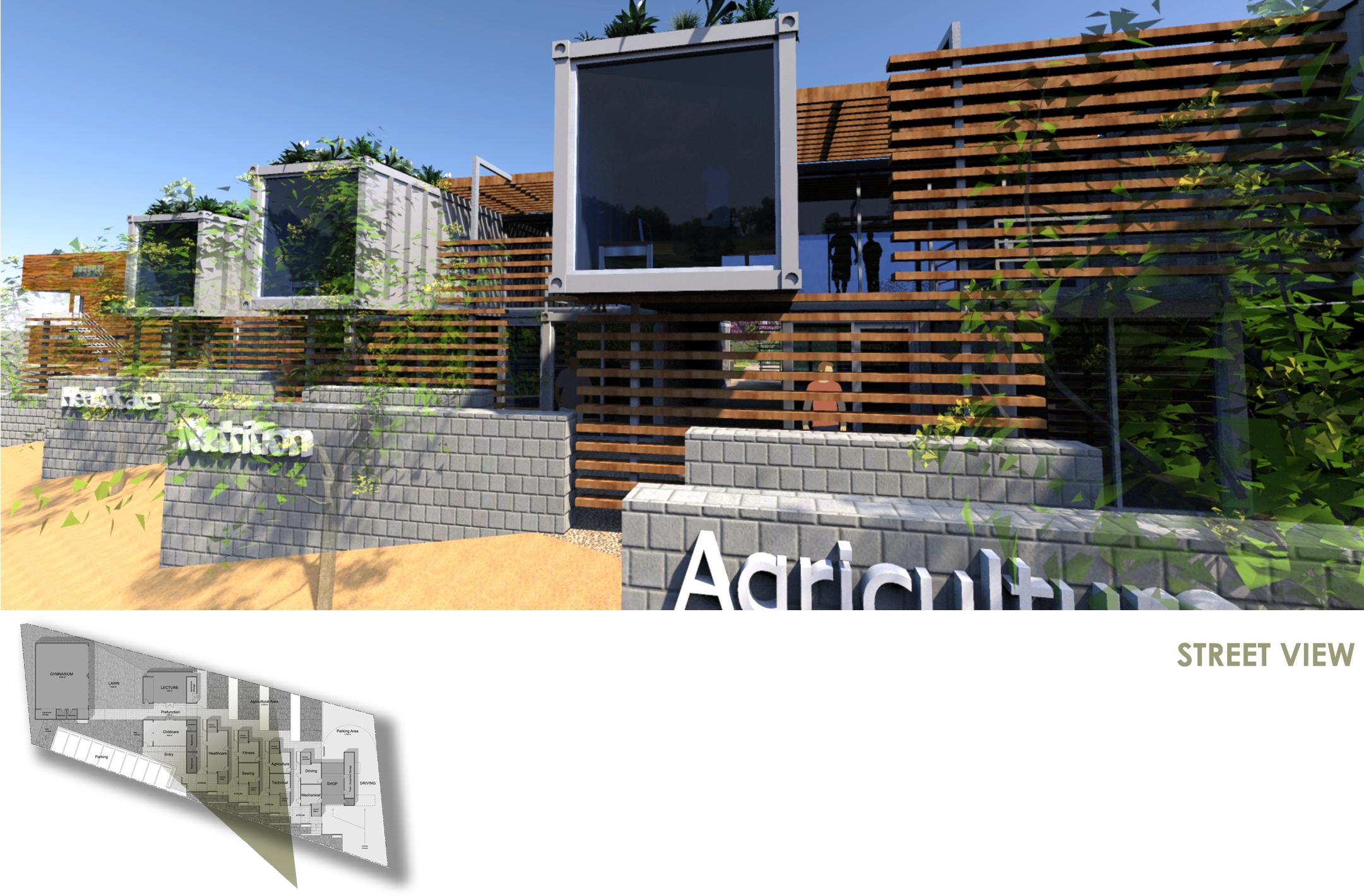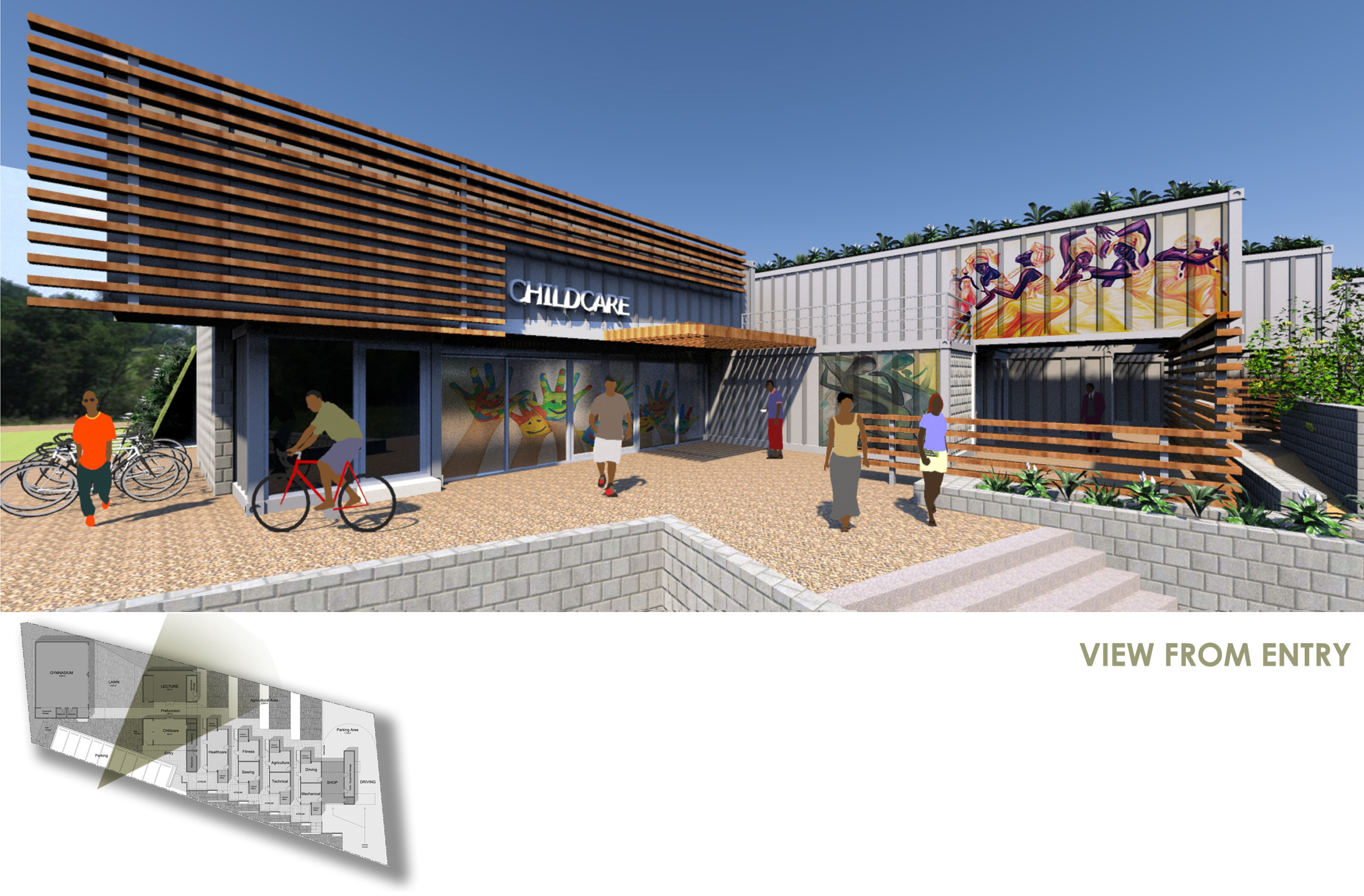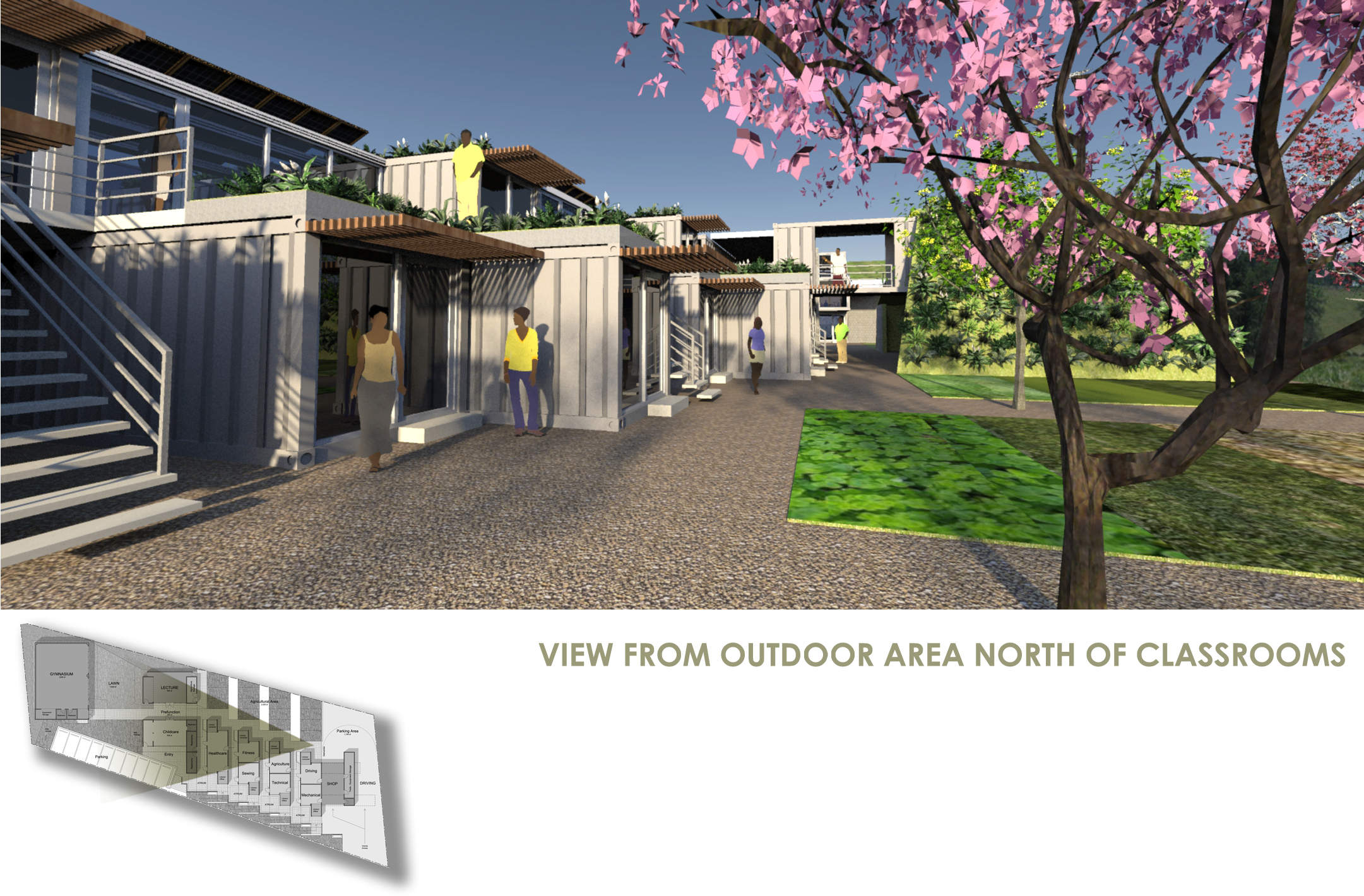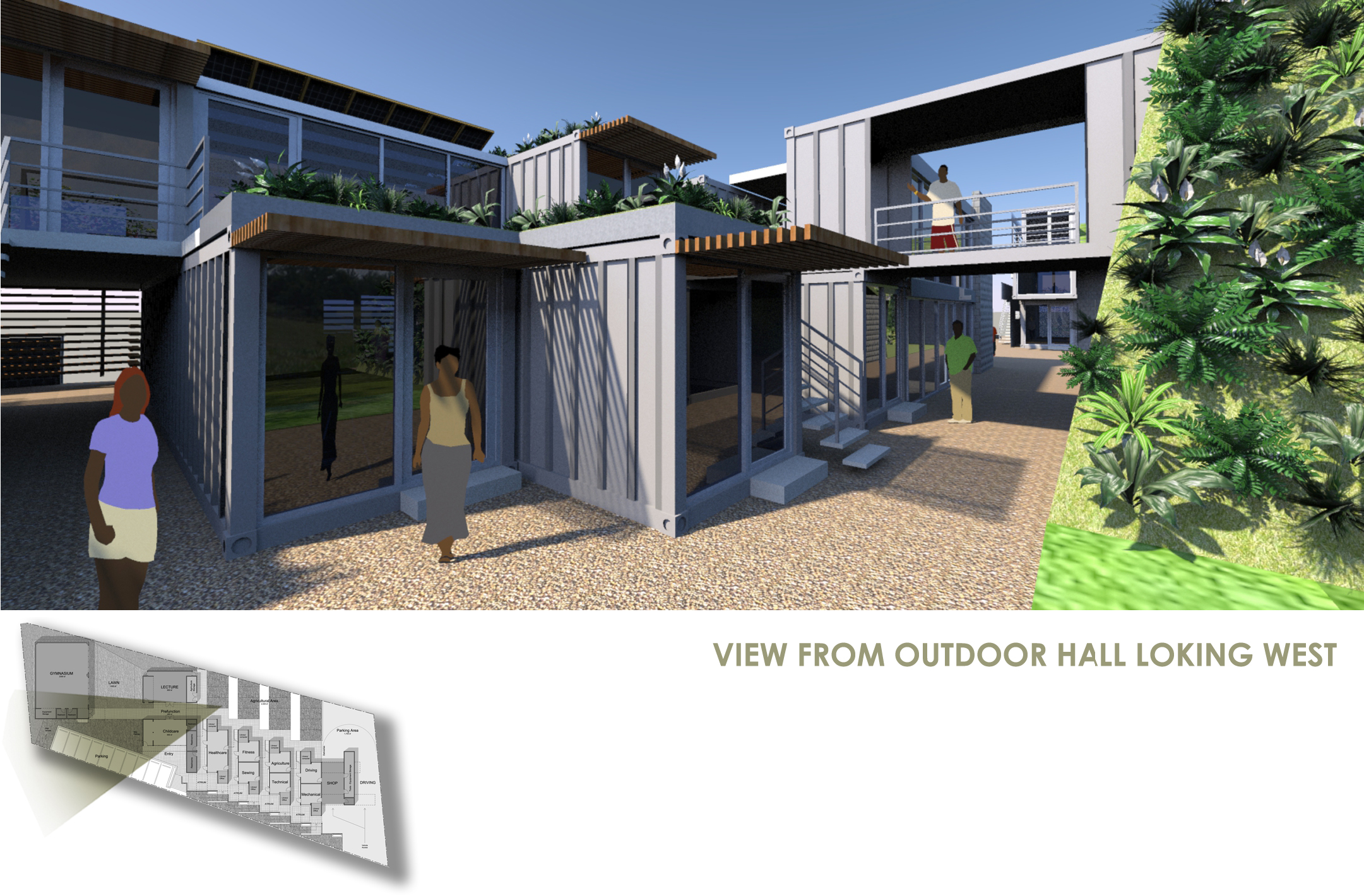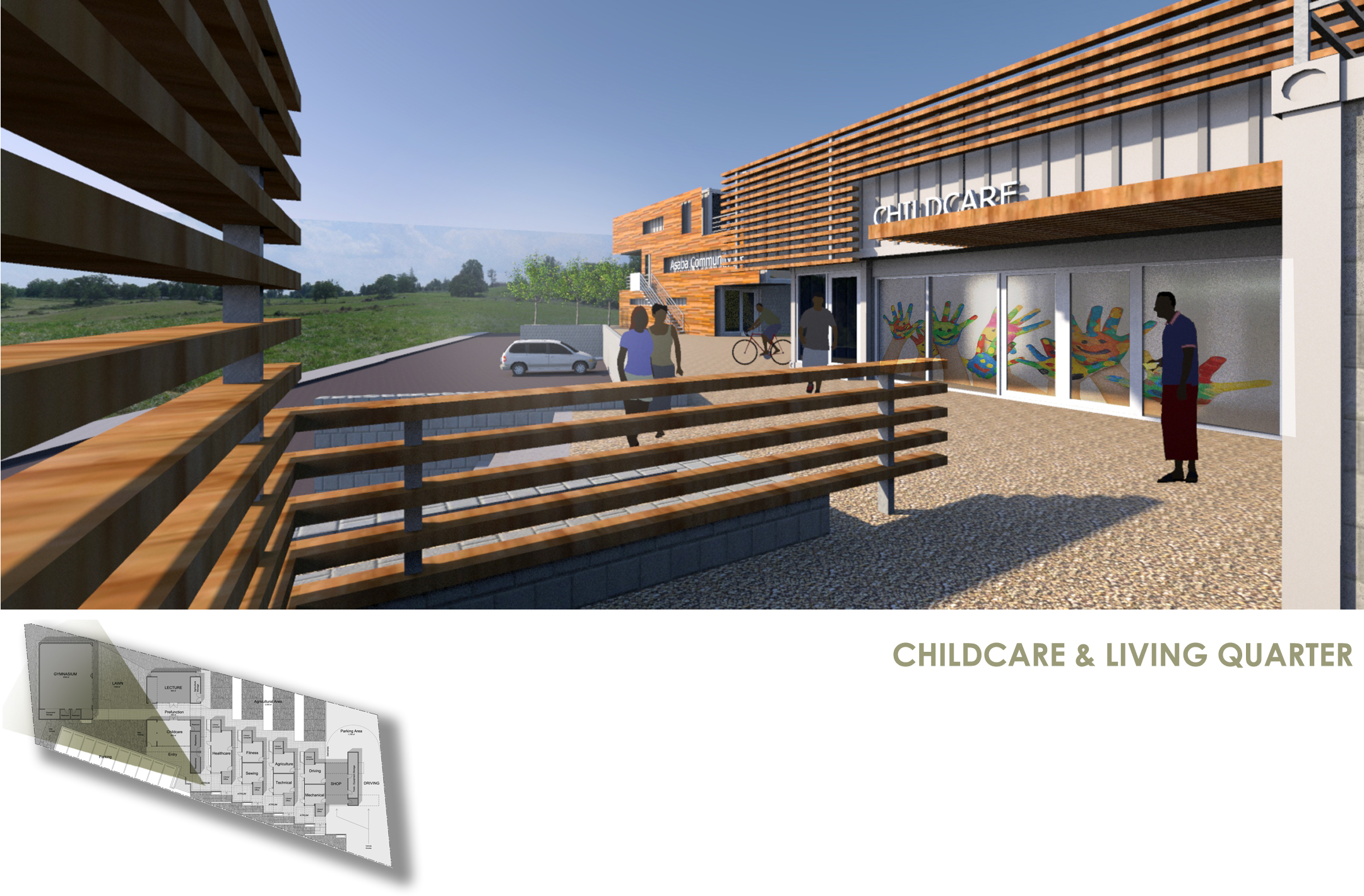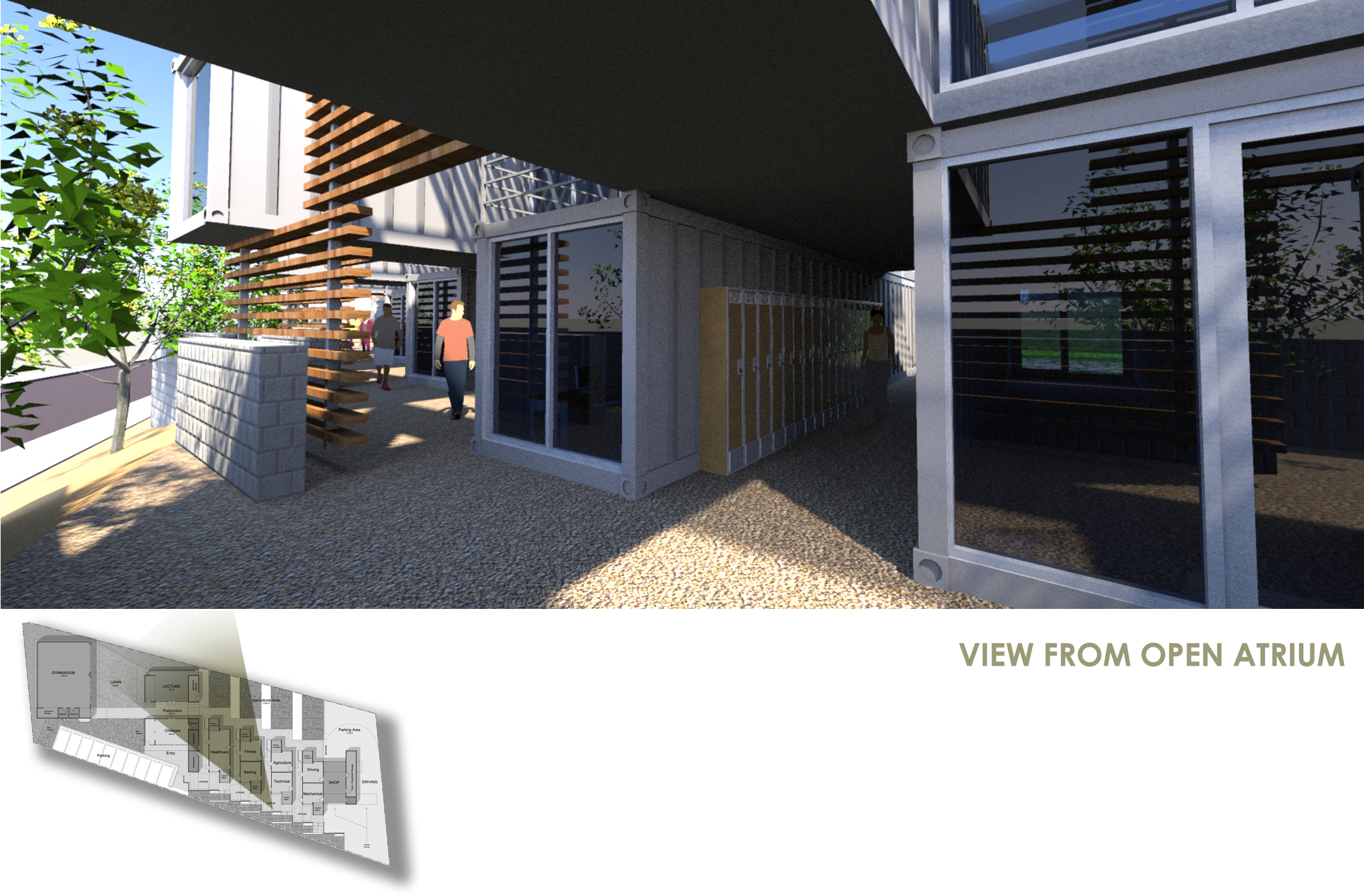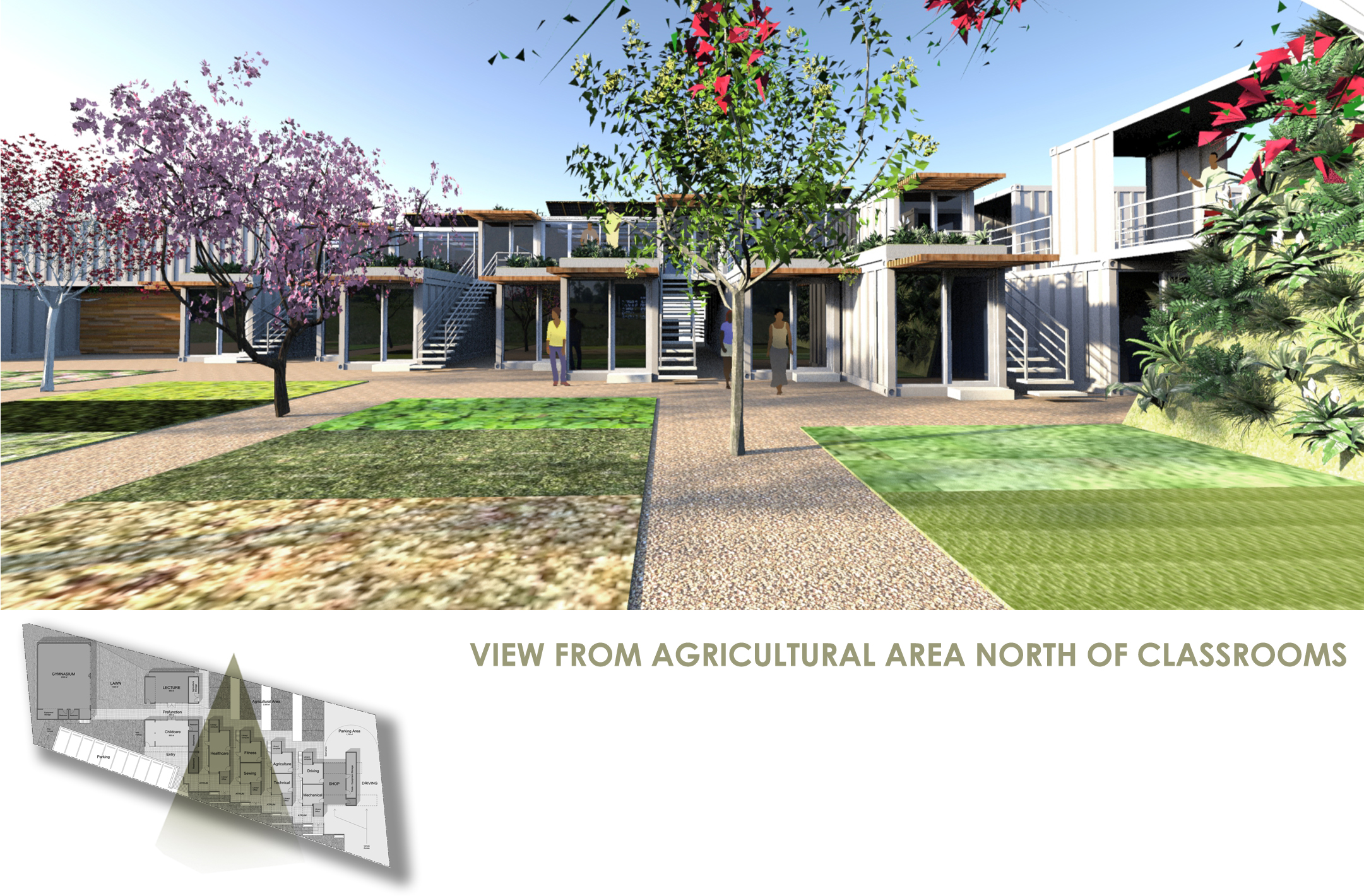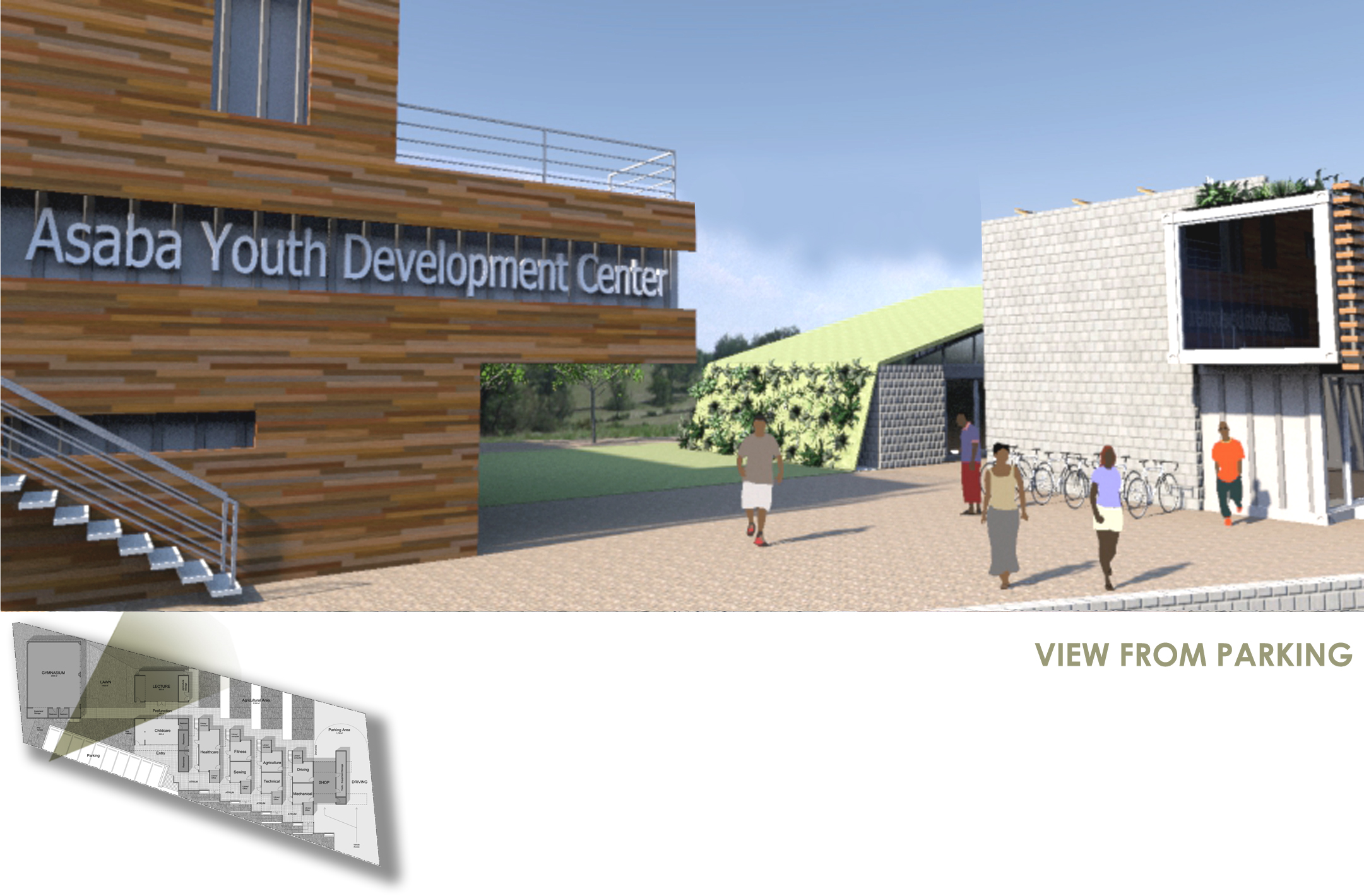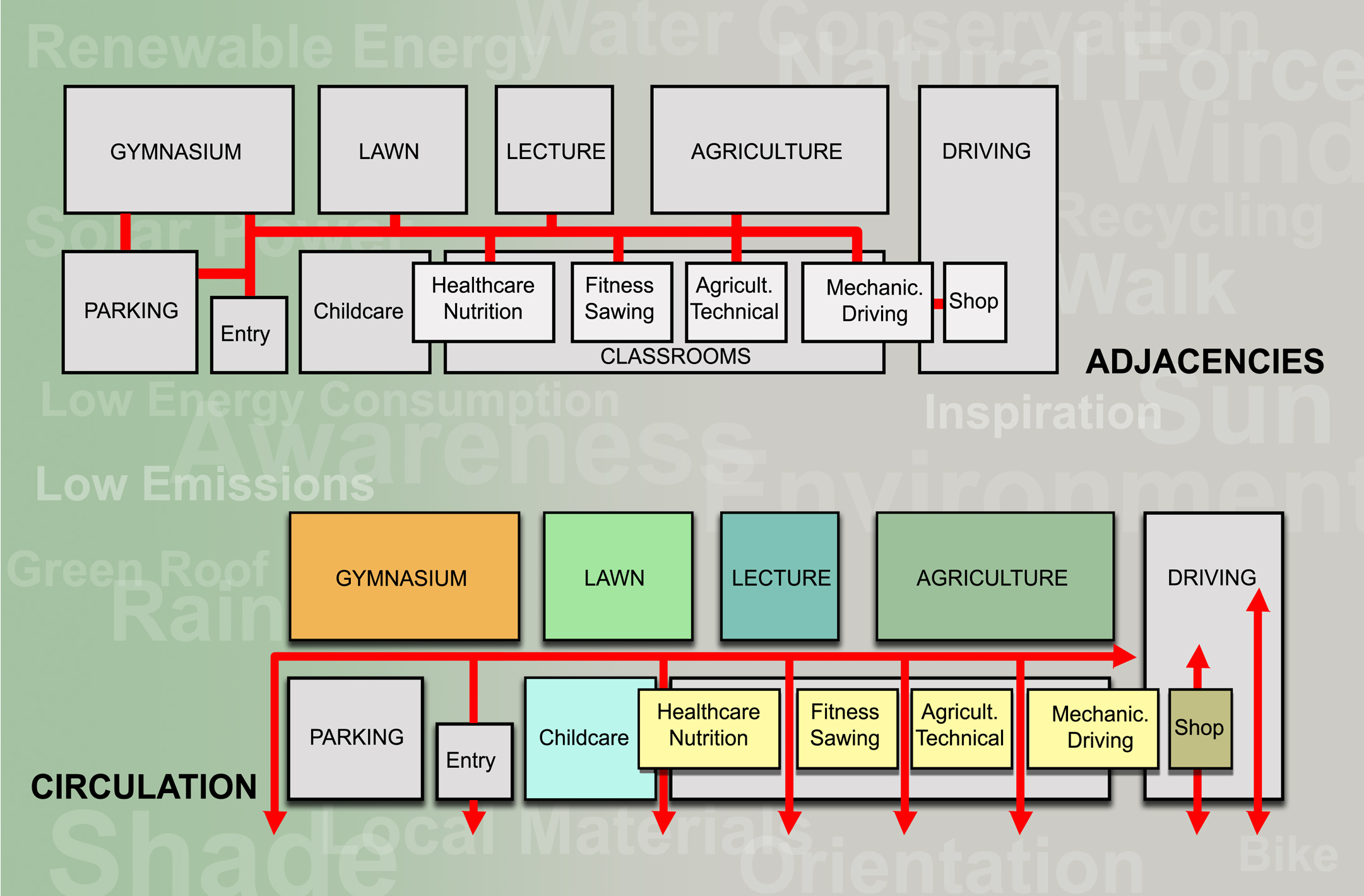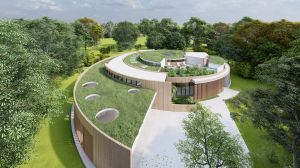Text...
Asaba Community Center, NIGERIA
The youth development center has several main programmatic elements including classrooms, a childcare center, a healthcare center, a gymnasium, and a lecture hall. The purpose of the Development Center is to open to the community and offer education in disciplines such Nutrition, Health and Fitness, Sewing, Technical, Agricultural, Mechanical, and Driving; some of these disciplines will be thought to both adults and children.
The childcare and healthcare center will be available for both students and the rest of the community, while the lecture hall will guest both educational seminars and events to outreach in the community.
The gymnasium will be available also both for students and public.
Asaba, as a large portion of Nigeria, is characterized by a climate with extreme conditions such as drought and floods, which occur on a regular seasonal basis, and each year they can have a very large impact on the population.
Another notable condition in the city, is the absolute absence of recycling infrastructure, awareness, and implementation, causing an epidemic spread of large amounts trash made of plastics which are left over on public grounds.
The building design was conceptualized around the needs of cost control, climate, local resources, low operation costs, and the possibility to be built in phases minimizing a negative impact on the overall budget and operations; in order to accomplish these goals the following principles were applied:
1. The site would be raised above the flood line to prevent the building from disruption of the activities and to be a "safe zone" for the neighborhood to further embrace the population with education and humanitarian causes. In order to obtain the "mass" needed to raise the site zero elevation line, dirt would be removed from other areas to promote the creation of small artificial lakes or to create landfills.
2. Some structural elements, retaining walls, and flooring decks will be built using cement block which contain plastics as aggregate; this mixture of ground plastics with OPC will allow to recycle a lot of local disposed plastic and create a system which promotes an out of the box and forward thinking mentality for the indigenous people.
3. The volume required to rise the building above flood line would be also obtained by rain and flood water collectors, which would preserve and allow to reuse that water for irrigation during drought or non rainy seasons.
4. The dirt fill and compacting cost will be offset by the no cost for escalation to install an efficient heat pump systems which will be used to cool the indoor environments using the temperature differential found several feet below ground. In addition thermal masses obtained by the use of the abovementioned concrete will help in keeping the building cool at no energy cost.
5. The entire building will be assembled using recycled shipping containers, which offer a high structural strength at low cost, modular construction and durability. Modularity will further extend to the windows and doors infill, shading devices and staircases.
6. The building orientation is designed to are fully consider the change of the sun angle over the season and to reduce the possibility for heat gain. Solar shading devices are used only when needed and not for aesthetic purposes, maintaining the looks of the building as if it is designed by nature rather than human hands.
7. Roof gardens, built over the metal decks of the shipping containers, will eliminate the heat gain through metal and create a sun barrier which will actually help cooling down the indoor environments. The recycled water will assist in maintaining the foliage of the garden vivid to preserve the indoor climate control purpose.
8. All the few new roof construction required beyond the enclosure obtained by shipping containers, will have an integrated PV (Photovoltaic Panel) System which will produce the energy required for the heat pump system to function, and to pump water from the reservoirs to irrigate the roof gardens, but only when the reservoirs are close to empty and force gravity pressure needs some assistance.
The building was programmed to allow a comprehensive, logical, and interactive circulation which promotes not only efficiency, but also human contact and interaction not only within the Community Center, but also with the street and neighboring traffic; the classrooms have multiple ramps accessible from the street by foot or bicycle, giving the center a feel of openness toward the community starting from the street edge.
Parking is limited to few cars, again promoting use of bicycles, pedestrian circulation, and ultimately human interaction, which has its center core placed on the lawn right between the Gymnasium and the Lecture hall. This area, creates a tie between the students and the people that come there just to use the gymnasium for recreation, creating an additional exposure to education and a positive catalyst for a brighter future.


